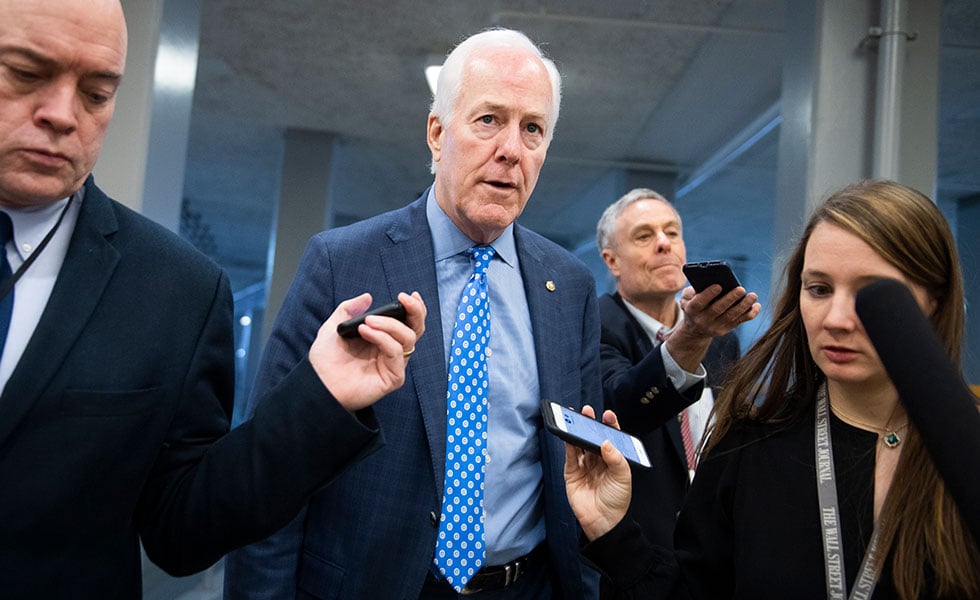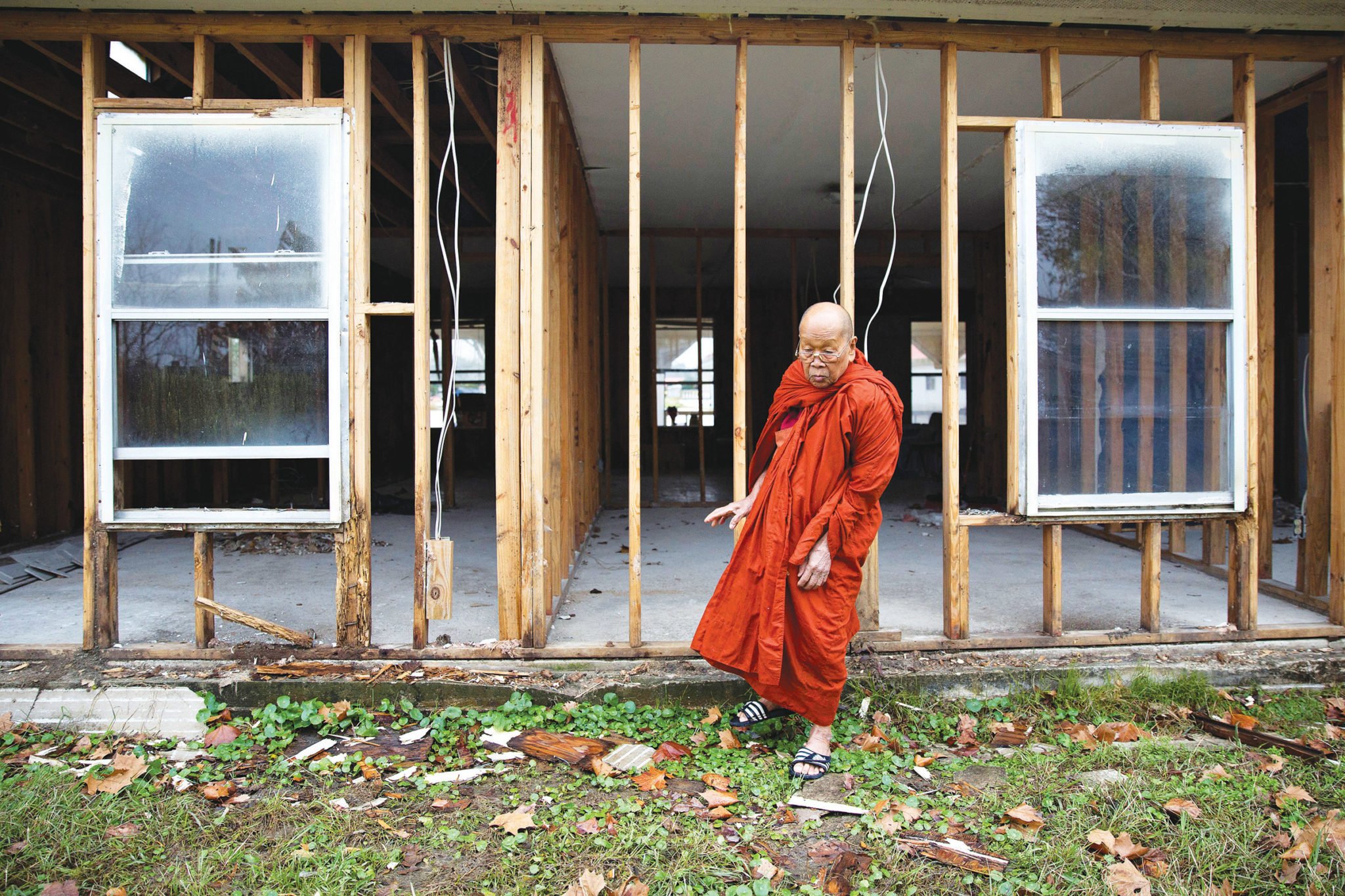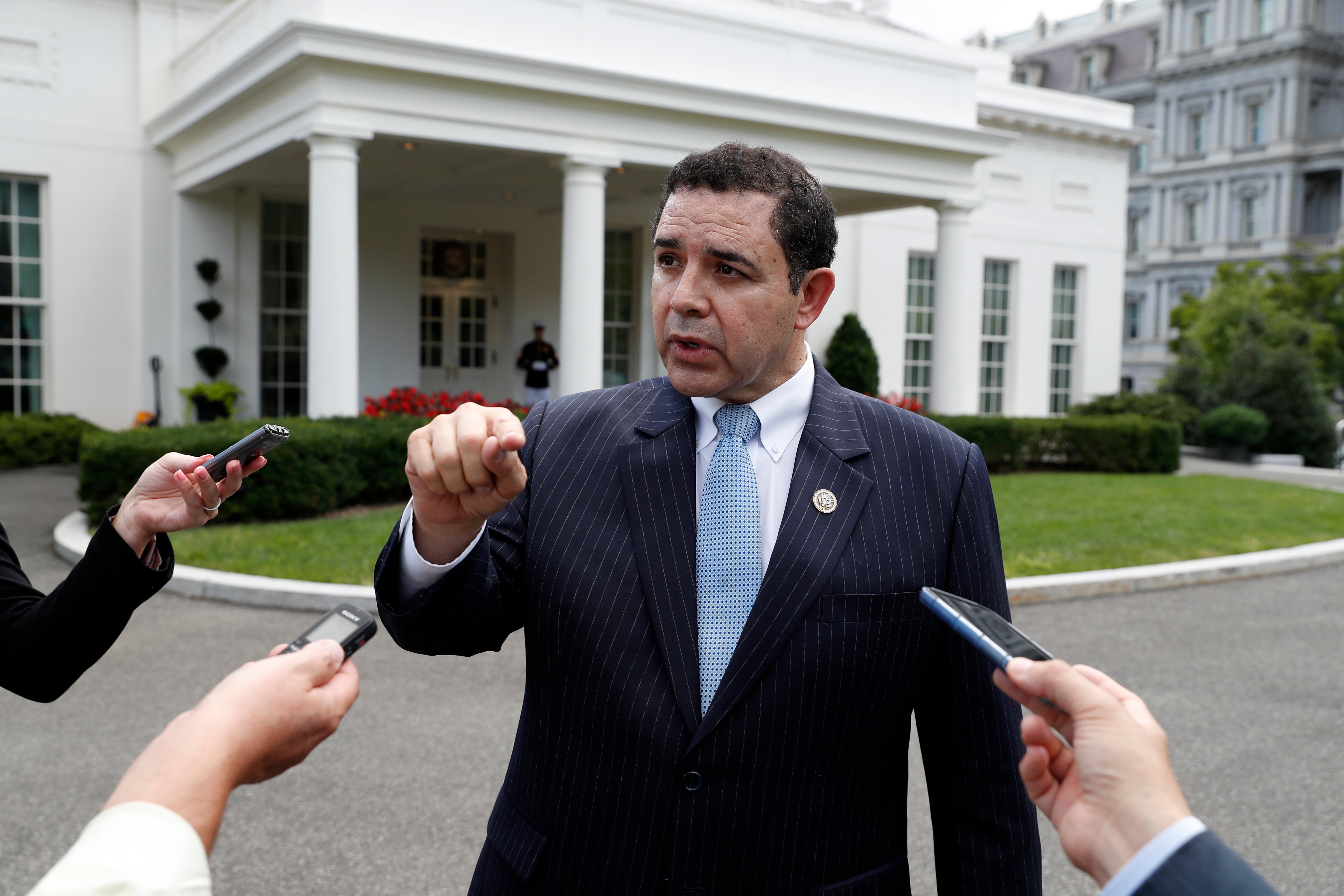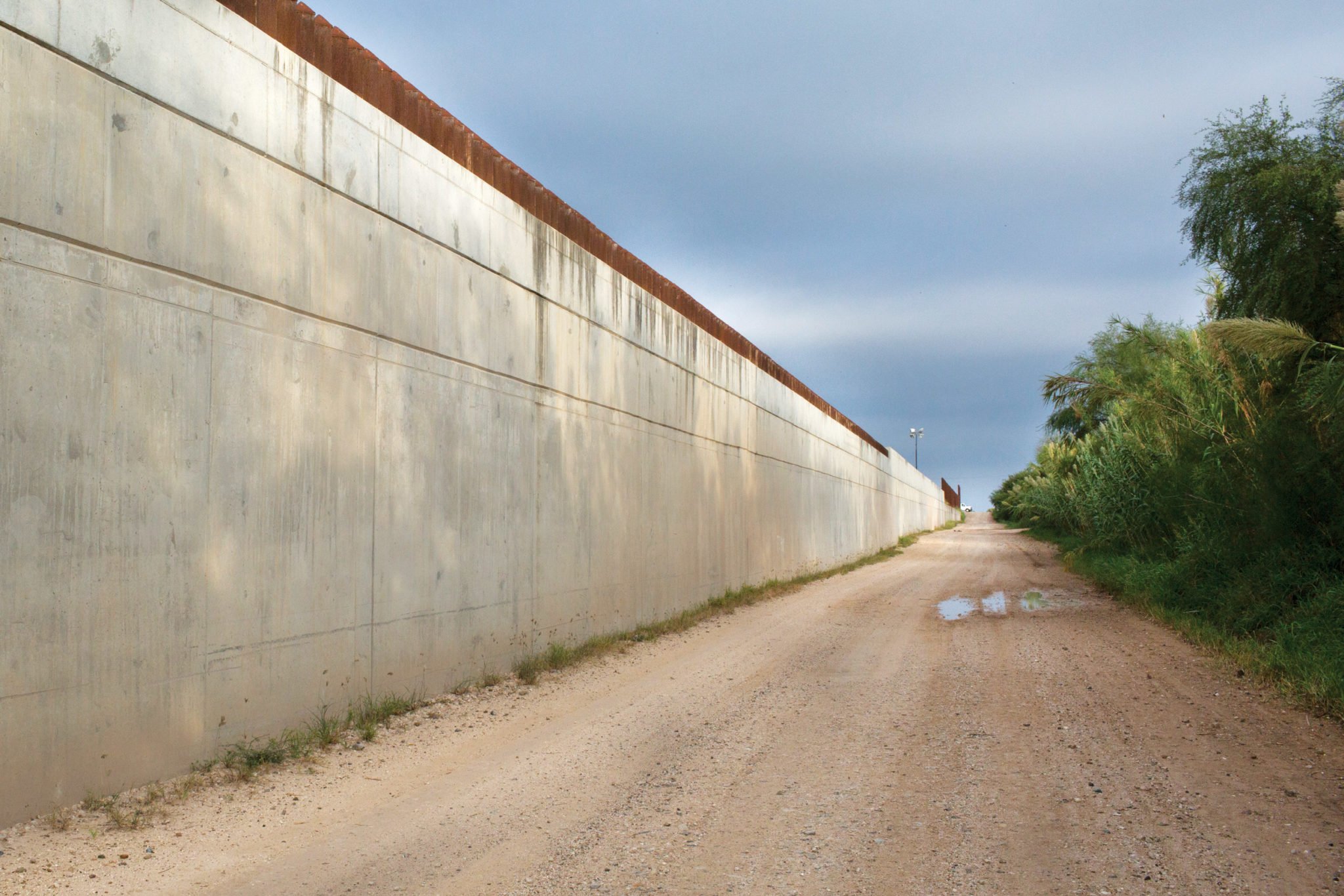
The Border Fence vs. Wall Debate is a ‘Trap’ for Democrats
“Steel slats, concrete barriers, or bollard-style fences – they are all the same,” said a McAllen congressman. “I will not stand by as some of my fellow Democrats fall into this trap.”

Above: This 18-foot levee wall completed in Hidalgo County in 2009 cuts through a wildlife corridor and blocks many animals, some endangered, from accessing the Rio Grande.
During a Monday interview with “Fox and Friends,” Democratic Senator Chris Coons claimed to see light at the end of the government shutdown tunnel. In recent weeks, President Trump had taken to calling his “big, beautiful” border wall a “steel slat barrier” — a step toward compromise, Coons said. “I am someone who is willing to see more border fencing … and I do think his moving towards steel slats rather than concrete wall, if it holds, is important,” he added. In saying so, the senator from Delaware joined other Congressional Democrats and some members of the Washington, D.C., press corps in treating a phony debate over terminology as a serious matter.
Here’s the reality: The fence and the wall are one and the same. Environmental groups and advocates who call the borderlands home have been saying so all along. “Fence, steel slats, wall — it’s just words,” said Scott Nicol, a longtime Rio Grande Valley resident and Sierra Club activist. “If you’re someone with property in the way of the structure, it doesn’t matter what you call it, you’re losing your land. For endangered species that need to move across a landscape, they don’t understand the semantic difference.”
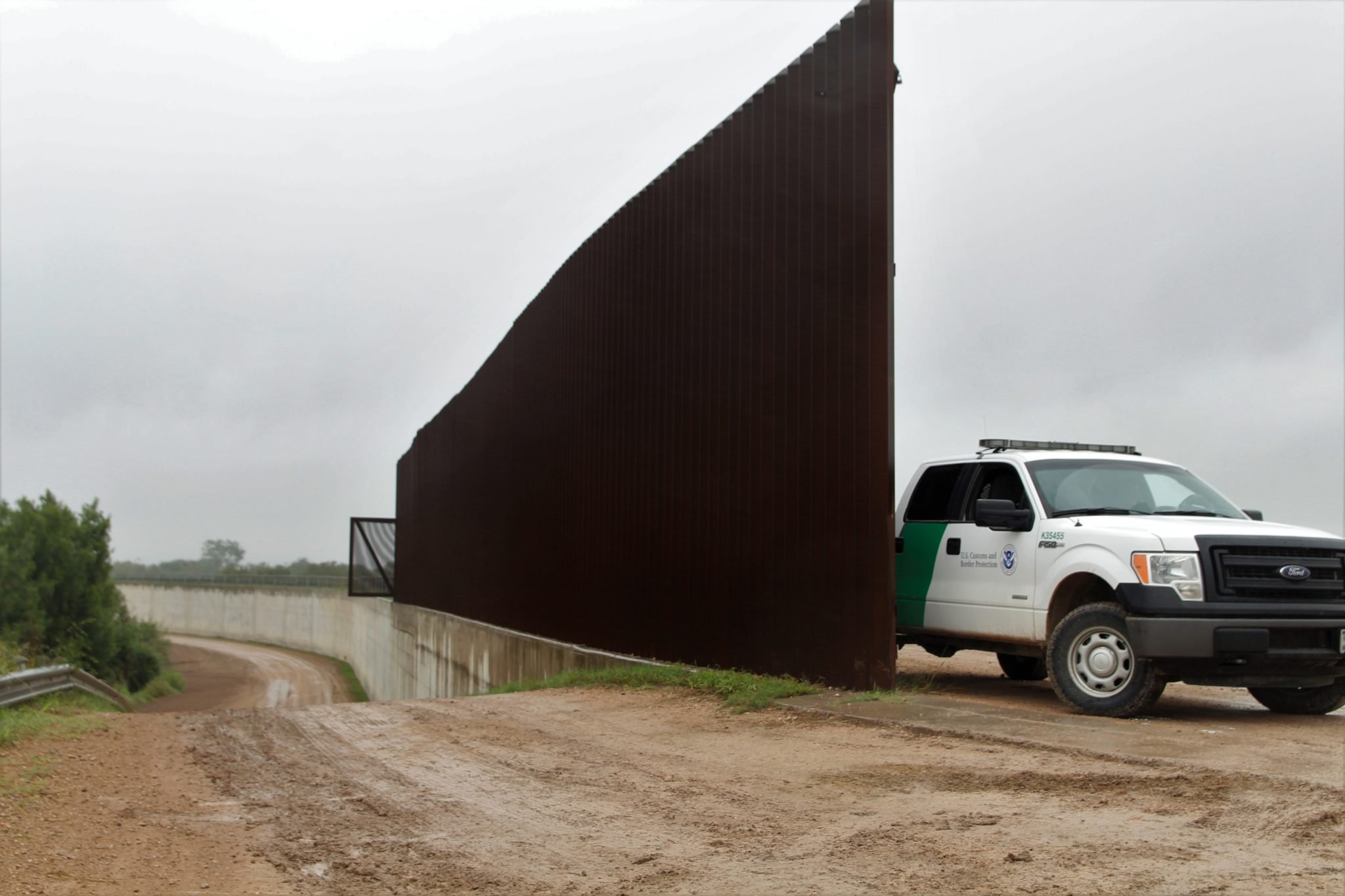
Consider what’s soon headed for South Texas, including the Bentsen-Rio Grande Valley State Park and the National Butterfly Center. In February, the Trump administration plans to break ground on at least 14 miles of what’s really both a wall and a fence. Contractors will first cut away the southern slope of existing earthen river levee and replace it with some 15 feet of sheer concrete wall, then they’ll top that with 18-foot tall bollard-style fencing — what Trump is calling “steel slats.” To be clear, half the structure will be literal wall. As Nicol wrote in a recent blog post: “Calling a 30-foot-tall concrete and steel monstrosity a ‘fence’ does not change its nature.”
Even Trump now seems to recognize that there’s little difference. On Christmas morning, the president said: “I can tell you [the government’s] not going to be open until we have a wall, a fence, whatever they’d like to call it. I’ll call it whatever they want, but it’s all the same thing.” In one of many Tweets to the same effect, Trump referred to the structure as “artistically designed steel slats.”
The Democrats, are saying loud and clear that they do not want to build a Concrete Wall – but we are not building a Concrete Wall, we are building artistically designed steel slats, so that you can easily see through it….
— Donald J. Trump (@realDonaldTrump) December 19, 2018
The president’s new acting chief of staff, Mick Mulvaney, aims to turn Trump’s change in terminology into a bargaining chip. On Sunday, Mulvaney told NBC that the president is “willing to take a concrete wall off the table” in order to secure the border and end the nearly three-week-long government shutdown. “If he has to give up a concrete wall and replace it with a steel fence in order to do that, so that Democrats can say, ‘See, he’s not building a wall anymore,’ that should help us move in the right direction,” Mulvaney said.
But Trump hasn’t actually made any real concessions. Not only is a “fence” an unmitigated disaster for private property rights and the environment, but U.S. Customs and Border Protection (CBP) itself has never wanted a solid concrete wall. Early last year, CBP tested eight wall prototypes in San Diego, including four concrete models. Many test results were kept confidential, but the Government Accountability Office published some in July. “The test team determined that all of the four concrete prototypes would present ‘extensive’ construction challenges, especially in a sloping border terrain,” reads one conclusion. “Border Patrol does not plan to use solid concrete on the bottom half of a primary barrier, to ensure agents have a clear line of sight to the border,” reads another. As former White House chief of staff John Kelly confirmed last month, the feds quietly abandoned a solid concrete wall “early on in the administration.”
“Fence, steel slats, wall — it’s just words.”
Only congressional Democrats, many representing districts and states far from the border, fail to grok reality. Coons is only the most recent example, and he could perhaps be forgiven for following his leader’s example. In November, New York Senator and Minority Leader Chuck Schumer was still pushing $1.6 billion in fence funding as a good compromise. “It’s just what we’ve done in previous years, funding for fencing on the border where experts say it makes the most sense; it would protect our border far more effectively and far more quickly than any wall,” he said on the Senate floor.
After blowback from progressives, Schumer’s opposition to the wall hardened. He now supports a measure passed by the House last week that Democrats say contains no new wall funding. That’s almost true: The bill would actually re-up a fraction of the $1.4 billion in fence funding that Congress provided in March. But the money is nowhere near the billions that Trump demands, and it would be restricted to the same stretches of wall that were funded in March, a House Democratic aide told the Observer. Trump and Senate Republicans have called the measure a non-starter, setting the stage for Democrats to potentially concede more border fence to reopen the government.
More clear-eyed are Congressional Democrats who represent the Texas border. In an email to the Observer Tuesday, Congressman Vicente Gonzalez, D-McAllen, put the matter bluntly. “I do not support the make-believe scenario where the president pretends a fence is not a wall, to lull Democrats into thinking he is making a meaningful move in the negotiation,” Gonzalez wrote. “Steel slats, concrete barriers, or bollard-style fences — they are all the same in my view, and I will not stand by as some of my fellow Democrats fall into this trap.”
